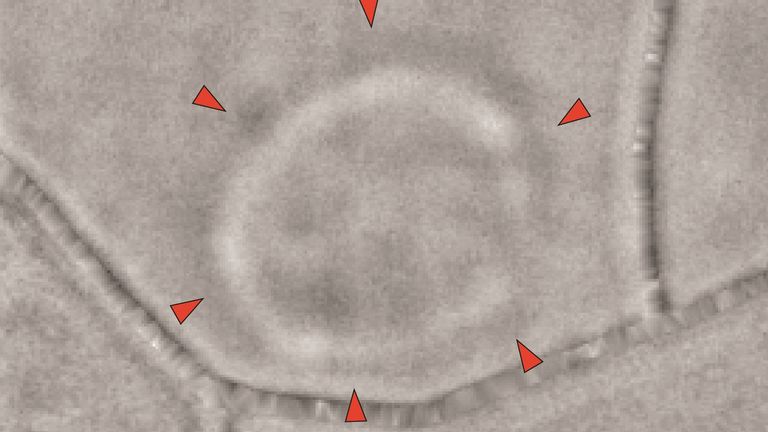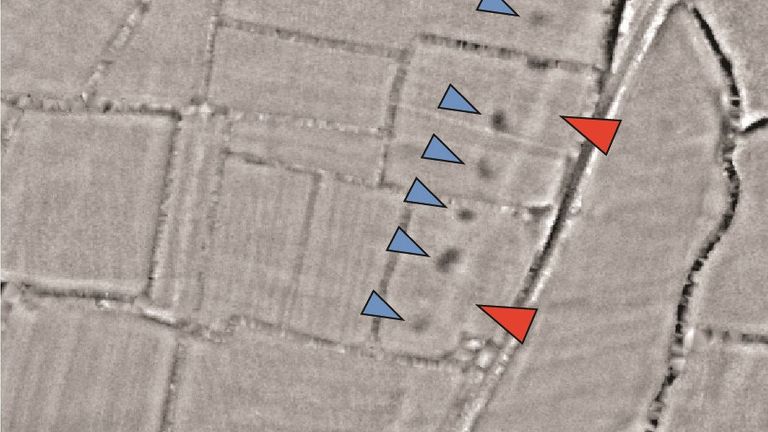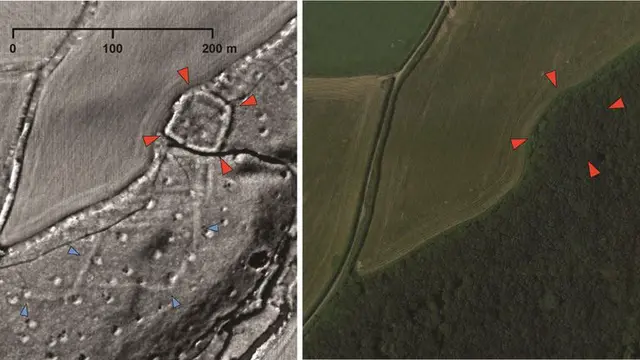Lockdown has given archaeology an unexpected boost with volunteers finding previously-unrecorded Roman, prehistoric and medieval sites from the comfort of their own homes.
In a project coordinated by a team at Exeter University, enthusiastic amateurs have been analysing images derived from Lidar (light detection and ranging) data - laser technology used during aerial surveys to produce highly detailed topographical maps.
Modern vegetation and buildings can be digitally removed, allowing archaeologists to look at the shape of the land surface to find the remains of archaeological earthworks.
The data is being systematically examined and cross-referenced with records of known archaeology and historic maps, meaning the total of new discoveries regularly changes.

Image:A probable Iron Age or Roman enclosed settlement, defined by a band or ditch (indicated by red arrows)
So far the team have found parts of two Roman roads, around 30 prehistoric or Roman large embanked settlement enclosures, and some 20 prehistoric burial mounds, as well as the remains of hundreds of medieval farms, field systems and quarries.
With fieldwork on hold due to the coronavirus pandemic, the scheme has allowed the study of ancient landscapes to continue.

Image:A section of probably Roman road which has been revealed by volunteers using light detection and ranging (Lidar) data
Project leader Dr Chris Smart, from the University of Exeter, said: "Ordinarily we would now be out in the field surveying archaeological sites with groups of volunteers, or preparing for our community excavations, but this is all now on hold.
"I knew there would be enthusiasm within our volunteer group to continue working during lockdown - one even suggested temporarily rebranding our project 'Lockdown Landscapes' - but I don't think they realised how many new discoveries they would make.
"I am very grateful to our team for their efforts and am glad that we could continue to do volunteer-led research in these unsettling times. At the current rate we expect them to recognise hundreds of new archaeological sites in the coming month or two."
 简体中文
简体中文

